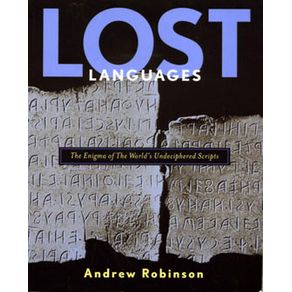This richly illustrated book, which highlights the thrills of archeological sleuthing, recounts the many attempts at understanding ancient civilizations through the decipherment of their long-lost writing. Major breakthroughs, such as the Rosetta Stone and its key to Egyptian hieroglyphs, and continuing enigmas such as the undeciphered scripts of the Etruscans and Easter Islanders are explored with all the fervor of a contemporary news story. Whether conveying the gradual discoveries in cracking Minoan writing and Mayan glyphs or the ongoing frustrations with the mysterious texts of ancient Sudan, Crete, Iran and India, Robinson (The Story of Writing: Alphabets, Hieroglyphs and Pictograms) is always careful to address the lay reader in clear prose, and to offer relevant photos, drawings, charts and maps. He also honors the translators themselves and is sympathetic to the obstacles they faced: he describes, for instance, a 16th-century bishop who destroyed Mayan codices even as he left"essential clues" for the decipherment of those that remained; he hails the young 18th-century Englishman whose friends called him "Phenomenon Young" as the man who "really launched the decipherment" of the Rosetta Stone. The decipherers had to challenge conventional wisdom, especially the thinking that ancient glyphs were largely representative icons rather than phonetic symbols like our own alphabets. Readers might be disappointed to learn that decades of decoding were spent on an inventory ofgoods and accounts and not on grand narratives, but at least they'll never struggle to decipher the book's terms. (Apr.)Forecast: Archeology and linguistics buffs will be delighted with this, as will those familiar with Jacques Derrida's theory of the history of writing systems.



